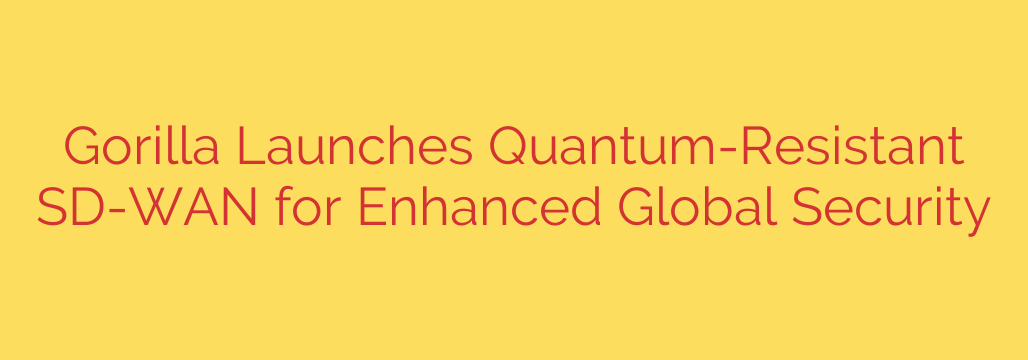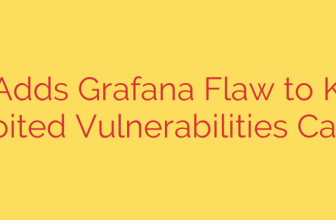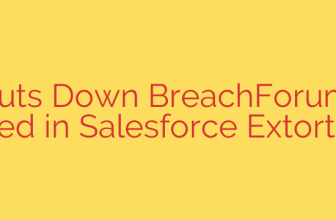
Protecting Your Data from Quantum Threats: The Rise of Post-Quantum Cryptography in SD-WAN
In the world of cybersecurity, the most significant threats are often the ones we can’t see yet. Today, organizations are facing an emerging and monumental challenge: the quantum computing threat. Malicious actors are already engaging in a strategy known as “harvest now, decrypt later,” where they steal encrypted data today with the full expectation of breaking its code once powerful quantum computers become a reality.
This looming threat renders much of our current encryption infrastructure obsolete. The standards that protect everything from financial transactions to government secrets are vulnerable. Fortunately, a new generation of security technology is rising to meet this challenge, led by the integration of quantum-resistant cryptography into modern network solutions.
The Coming Storm: Why Quantum Computing Changes Everything
For decades, the digital world has relied on encryption algorithms like RSA and Elliptic Curve Cryptography (ECC). Their strength is based on the difficulty of solving complex mathematical problems with today’s computers. A standard computer would take billions of years to break a strong RSA key.
A quantum computer, however, operates on entirely different principles. It can process vast numbers of calculations simultaneously, making it capable of solving these “unsolvable” problems in a matter of hours or days. This means that any data protected by legacy encryption—even data that is secure today—is at risk of future exposure.
A Proactive Defense: Introducing Quantum-Resistant SD-WAN
To combat this threat, forward-thinking technology is combining the efficiency of Software-Defined Wide Area Networking (SD-WAN) with the advanced protection of Post-Quantum Cryptography (PQC). This creates a quantum-resistant SD-WAN, a network solution built to secure data not just for today, but for the quantum era of tomorrow.
By embedding PQC directly into the network fabric, organizations can create a secure, encrypted tunnel for all data in transit. This ensures that even if data is intercepted, it remains indecipherable to both current and future quantum-based attacks.
How Post-Quantum Cryptography (PQC) Works
Post-Quantum Cryptography refers to a new class of cryptographic algorithms that are secure against attacks from both classical and quantum computers. These algorithms are based on mathematical problems that are believed to be too complex for even quantum systems to solve efficiently.
The U.S. National Institute of Standards and Technology (NIST) has been leading a global effort to standardize these next-generation algorithms. After years of rigorous testing, NIST has selected a suite of PQC algorithms designed for different purposes. Key examples include:
- CRYSTALS-Kyber: An algorithm designed for key establishment, ensuring that two parties can securely agree on an encryption key without an eavesdropper being able to discover it.
- CRYSTALS-Dilithium: An algorithm used for creating digital signatures, which verify the authenticity and integrity of a message or transaction.
By implementing these NIST-recommended algorithms, a quantum-resistant SD-WAN provides a verified and future-proof shield for sensitive information.
Key Features of a Modern Quantum-Resistant Network
A robust quantum-resistant network solution offers more than just advanced encryption. It provides a comprehensive security and management framework for modern enterprises.
- Future-Proof Data Protection: The core benefit is securing sensitive data against the “harvest now, decrypt later” threat, protecting intellectual property, financial records, and national security information for the long term.
- Zero-Trust Architecture: These solutions are built on a zero-trust model, meaning no user or device is trusted by default. Every connection is verified, isolating traffic and minimizing the potential impact of a breach.
- Seamless Integration: Advanced quantum-resistant SD-WANs are designed to integrate smoothly with existing network infrastructure, allowing organizations to upgrade their security posture without a complete and costly overhaul.
- Centralized Management and Efficiency: Like traditional SD-WAN, this technology simplifies network management through a central controller, reducing operational costs and improving overall network performance and reliability.
Actionable Steps: Is Your Organization Ready for the Quantum Era?
Waiting for quantum computers to become mainstream is not a viable strategy. The time to prepare is now. Here are a few steps your organization should consider:
- Conduct a Risk Assessment: Identify your most critical and long-lived data. Which information would be most damaging if it were decrypted 5, 10, or 20 years from now?
- Inventory Your Cryptography: Understand where and how your organization uses encryption. This includes everything from your website’s SSL/TLS certificates to your internal data-in-transit protocols.
- Develop a Migration Plan: Begin planning the transition to PQC. Prioritize the protection of your most sensitive data pathways first.
- Consult with Security Partners: Engage with experts and solution providers who are at the forefront of post-quantum cryptography to understand how you can begin implementing these new security standards.
The transition to a quantum-resistant world is a marathon, not a sprint. By adopting quantum-resistant SD-WAN technology, organizations can take a decisive step toward securing their operations and building a network that is resilient, efficient, and prepared for the future of cybersecurity.
Source: https://datacenternews.asia/story/gorilla-unveils-quantum-safe-sd-wan-to-boost-global-security








